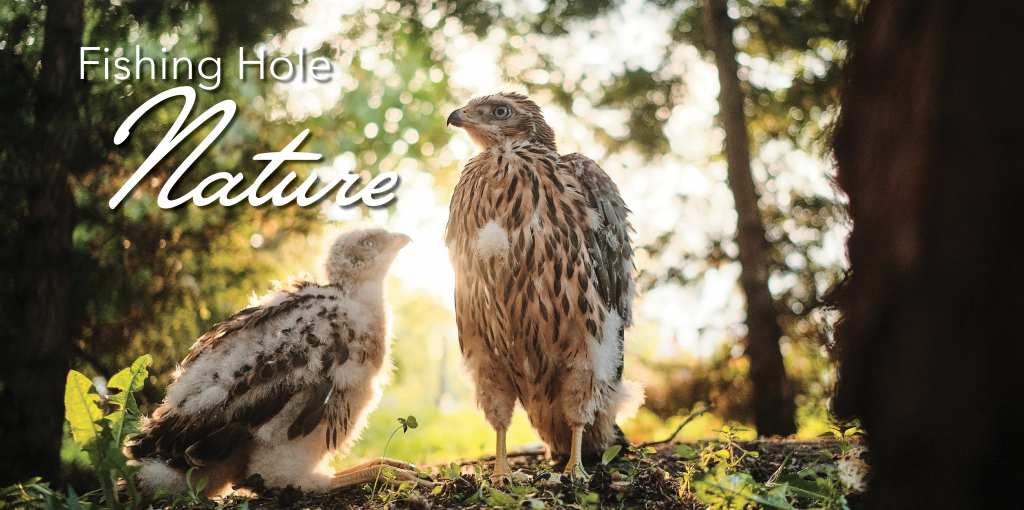Flycatchers migrate into our area to spend spring and summer. Scissor-tails, Eastern Phoebes, Eastern Kingbirds, and many others. They mate, nest and raise their young here, and then in late fall they gather together in large flocks and head south to spend warm winters in Mexico or Central America.
Some flycatchers, such as the aptly named Eastern Phoebe, are “little brown jobs” with not much to characterize them other than their repeating call of “PHOEBE”. Scissor-tailed Flycatchers, also known as the Texas Bird-of-Paradise, are all-time favorites with exotic long split tails, light grey bodies and peachy-orange wing and belly markings. Eastern Kingbirds appear very formal and pert in their tuxedo feathers of black and white.
As expected by their name, flycatchers are primarily insectivores which can execute tight spinning maneuvers to catch insects on the wing. You will see them almost anywhere, on telephone wires, up in high trees, on fence posts, or spots near the water to catch lake insect hatches. Farmers and ranchers appreciate them because they eat grasshoppers, flies and other insects that harm crops and animals.
You can tell if a bird is a flycatcher by looking at its beak shape. The types of bills that catch flying insects tend to be very flat and look like pancake spatulas! These flat beaks have more surface area than birds with pointed bills which makes them best for catching fast winged insects. This flat beak gives flycatchers an advantage.
To see photos of our Texas bird-of-paradise in flight, check out Google images and videos for “Scissor-tailed Flycatcher in flight”. Or look on youtube.com. These sky dancers are breathtaking aerial artists, fluttering vertically up and down as much as 100 feet during mating season. It is worth the time to watch a scissor-tailed aerial show.
Learn more about the incredible nature in our area by joining a chapter of the Texas Master Naturalist organization. To find a chapter close to you, or to read about the state program, go online to www.txmn.org. Volunteer and get involved!
PHOTO CAPTIONS
1.A Texas Bird of Paradise, the Scissor-tailed Flycatcher. About 14” long, it has a gray body, dark gray wings, peachy-orange belly and wing markings, and a split tail that is as long as its body.
2. Look straight into any flycatcher’s face and you can see how very flat their bill is. Like a spatula! All the better to catch winged insects.
3. This Eastern Kingbird flycatcher is 70’ up in a tree, snatching up high flying insects. Sometimes the flying insects are low to the ground and sometimes high in the sky. The birds go where the getting is good.
4. Eastern Kingbirds appear very formal, dressed in black “coats, tails & hats” with white “shirts”.
5. This ‘little brown job’ is an Eastern Phoebe flycatcher, and she is sitting defiantly on her nest. Can you make out her flat beak?
